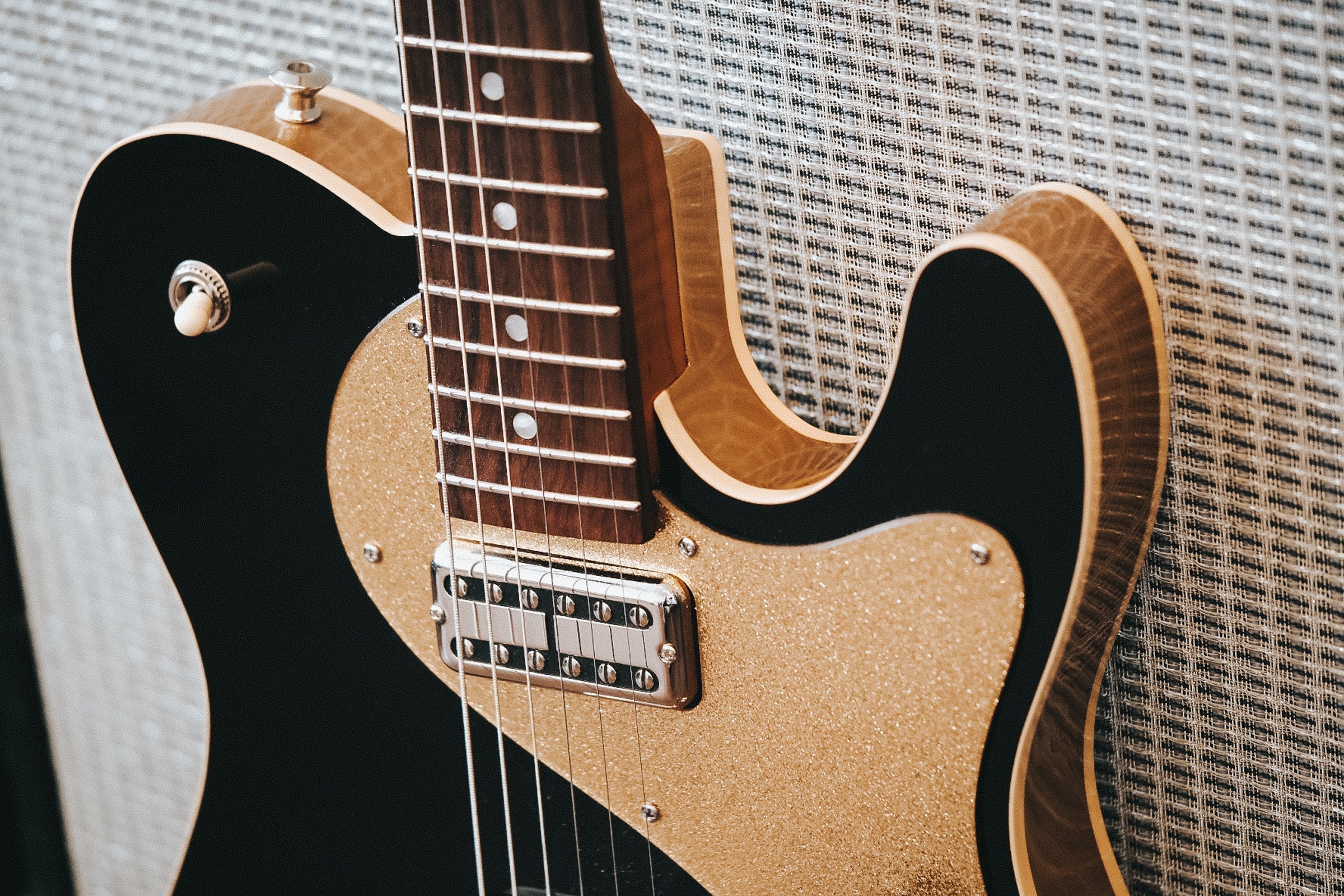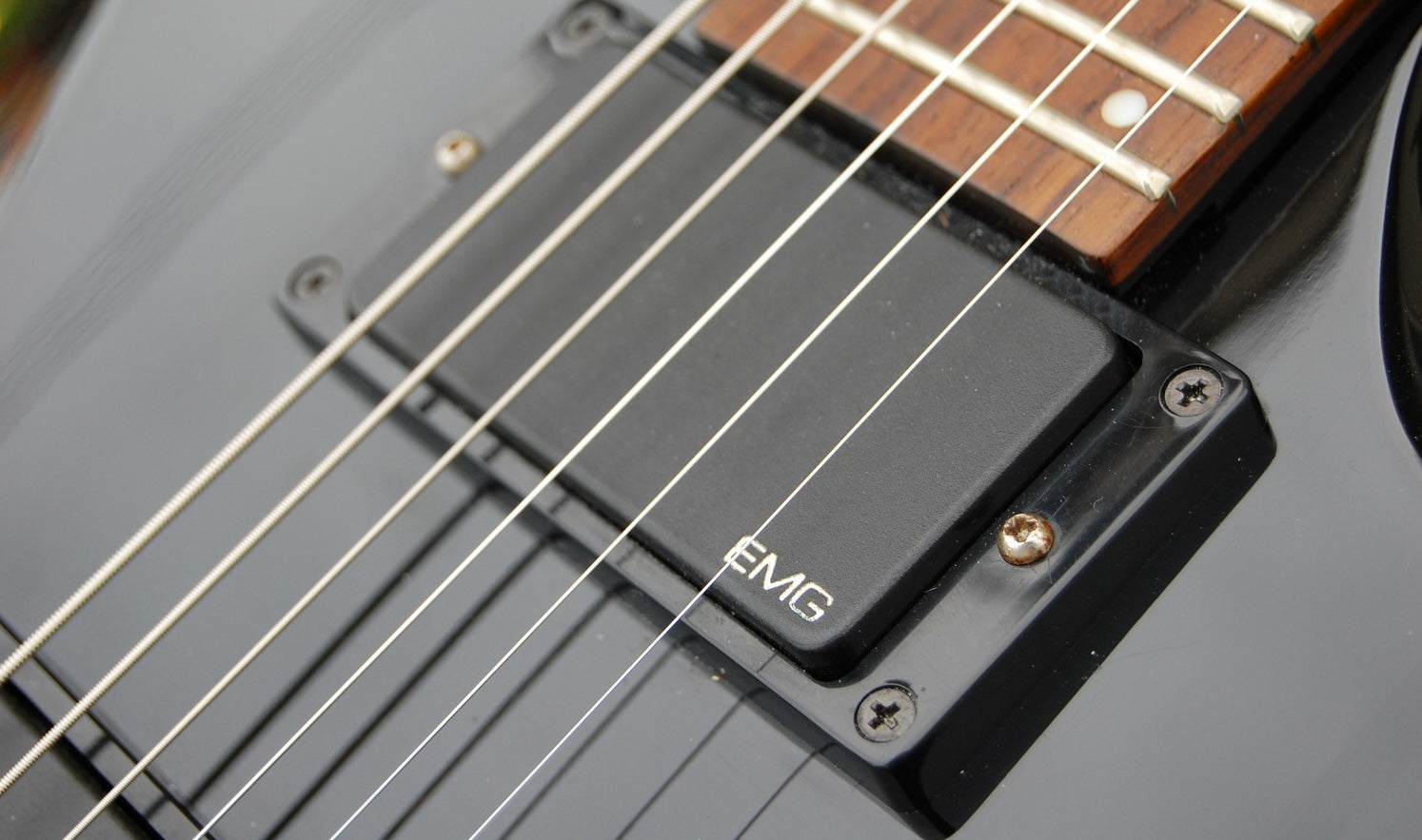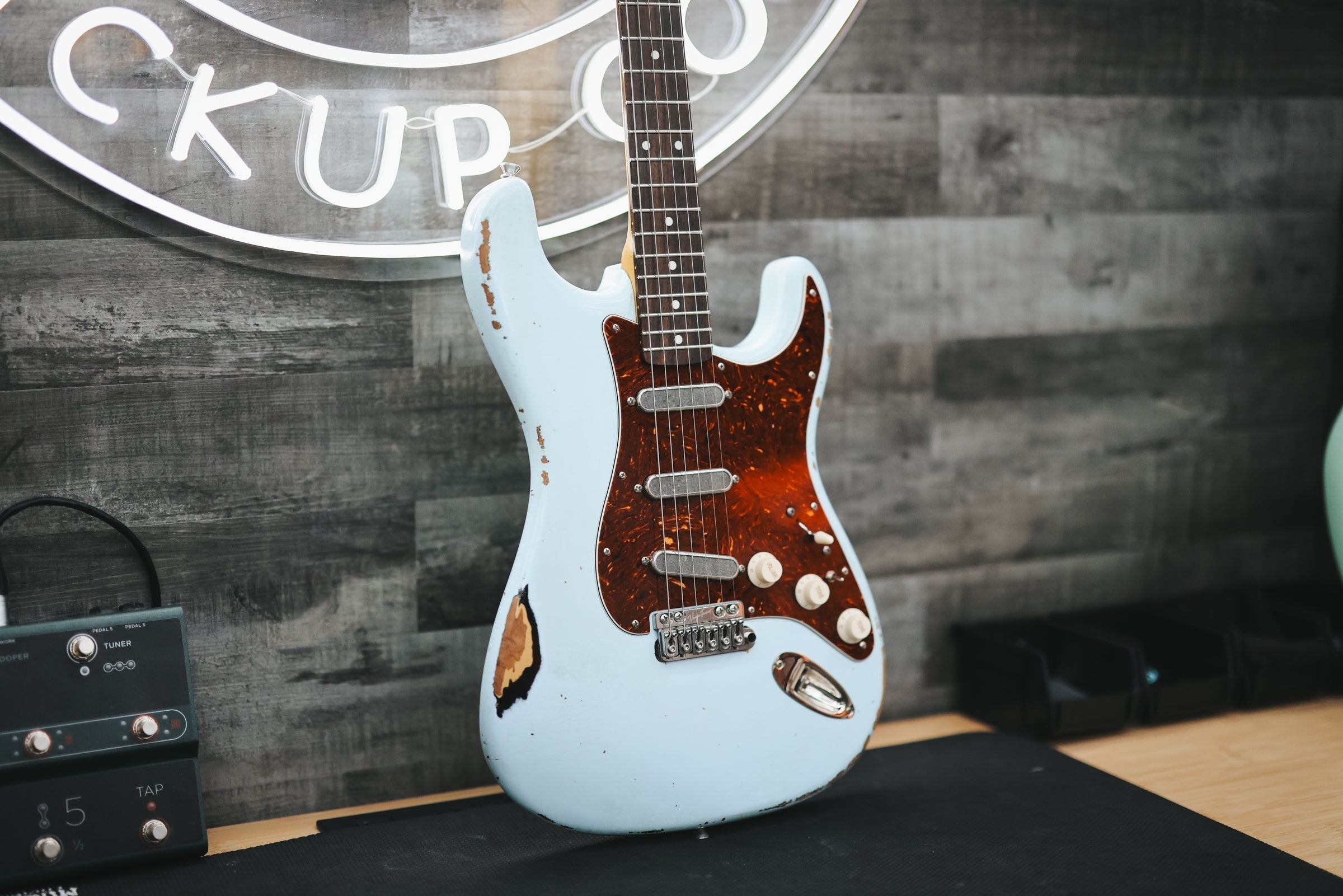
How Many Strings Does A Guitar Have?
Without guitar strings, there’s no way to hear the heart and soul of your instrument. Without them, a guitar is just a well-crafted piece of wood hanging on your wall. Strings are what create sound when you play, and they shape everything about your guitar’s tone and feel. Because they’re so central to guitar music, it’s worth understanding how many strings guitars actually have, and why.
In this post, we’ll explore how many strings a guitar has, why strings matter so much, and what different setups exist, from your traditional six string guitar to instruments with extra strings that create a unique sound. We’ll also talk about how string materials like nylon strings or steel strings affect tone, and where you can grab new strings when it’s time for a change.
And if you need to learn how to actually swap out a set, here’s a step-by-step guide on how to change guitar strings.
How Many Strings Does A Guitar Have?
The quick answer: most guitars have six strings. That’s the standard across both steel string acoustic and electric guitars. In standard tuning, the six strings are tuned E-A-D-G-B-E from the lowest sixth string to the highest first string. This tuning covers a wide pitch range while still keeping the neck comfortable to play.
Six strings hit the sweet spot between simplicity and range. They let you play single-note melodies and complex chord shapes without feeling cramped or overextended. But not every type of guitar follows that six-string rule. Some have fewer strings for focus and ease, while others add extra strings for range and new sonic territory. You’ll find 4-string basses, 7-string and 8-string extended range guitars, and even 12-string guitars that shimmer with doubled tones.
So while the standard guitar has six strings, there are many exceptions depending on playing style, tone goals, and genre. Let’s look at why those strings matter so much in the first place.
Why Does A Guitar Need Strings?
It might sound obvious, but the guitar needs strings because that’s where the sound begins. When you pluck or strum a string, it vibrates, and that vibration creates musical notes. The body of the guitar then amplifies those vibrations acoustically through a hollow wooden body or electronically through pickups on an electric guitar. It gets a little more complicated with electric guitars - basically because electric guitar strings are ferrous, when they are inside the magnetic field of the guitar pickup(s) the string vibrating creates a tiny signal that then gets amplified by your amplifier. More on how electric guitar pickups work can be found here.
In short, no strings, no sound.
The string’s vibration interacts with the guitar’s construction to create tone. Generally, a steel-string acoustic will project brightly and loudly, while a classical guitar with nylon strings has a softer, warmer tone suited for fingerstyle and Latin-inspired music styles. The string material, tension, and gauge all influence how your guitar responds to your playing style.
Think of it this way: the guitar’s body (and in the case of electric guitars), pickups shape the sound, but the strings are what make it happen. They’re the starting point of every note, riff, and chord you’ll ever play. That’s why choosing the right strings and keeping them fresh matters so much.
Guitar Variations
Not every guitar uses six strings. Over time, musicians and builders have experimented with different designs to achieve broader pitch ranges, new tones, or easier playability. Below are some common variations.
Classical Guitar (Spanish Guitar)
A classical guitar, also known as a Spanish guitar, uses nylon strings instead of steel. These guitars have six strings, but their tone is mellow and rounded compared to the bright, punchy voice of a steel string acoustic. The wider neck and softer strings make them great for fingerstyle playing and traditional genres like flamenco or bossa nova.
Nylon strings are sometimes easier on the fingers, especially for beginners, but their wide neck profile can be difficult for smaller hands to get the hang of bar chords. Nylon strings offer a unique sound that is warm, expressive, and rich in overtones. If you’re playing classical pieces or softer music styles, this type of guitar will feel right at home.
Twelve String Guitars
A twelve string guitar doubles each string so there are six pairs, or “courses”, instead of six individual strings. When strummed, these pairs create a lush, chorus-like shimmer that’s instantly recognizable in folk, rock, and pop recordings. A classic example of this is “Hotel California” by the Eagles. The intro guitar line is done using a twelve string guitar and is an iconic sound.
For the lower four pairs, one string in each course is tuned an octave higher, while the top two pairs are in unison. That setup gives a 12-string guitar its bright, jangly tone that fills out recordings beautifully. The feel is similar to a standard guitar if setup correctly, though you’ll need a little more hand strength to press two strings at once.
If you want a fuller sound for rhythm parts or acoustic recordings, a twelve-string can add amazing depth to your guitar music.
Photo by K3NT on Unsplash
Extended Range Guitars
Extended range guitars include seven and eight-string models. These guitars add one or more lower strings beyond the usual six. A 7-string typically adds a low B, while an 8-string adds an even lower F#.
Those extra strings open up deeper bass notes and wider chord voicings. They’re common in metal, progressive rock, and modern jazz genres, all of which benefit from the extended tonal range. Players use them to combine bass lines and chords in one instrument or to explore more complex chord shapes.
While the neck is wider, many players love how these guitars let them bridge the gap between guitar and bass. They produce a unique sound that pushes traditional guitar playing creativity.
Photo by Kari Shea on Unsplash
Bass Guitar
If you’ve been to a live show with a full band, you’ve definitely heard, and felt, the bass guitar. It's the instrument providing that low, steady foundation beneath the rest of the mix. Bass guitars typically have four strings tuned to E-A-D-G, which are the same notes as the lowest four strings on a guitar, just an octave lower.
The bass guitar provides rhythm and low-end support. Its thicker strings and longer scale produce powerful, resonant notes that fill out the music’s bottom end. Some basses have five or six strings to expand range (adding a low B or high C), but the classic four-string remains the most common.
Bassists focus more on timing, groove, and tone rather than chords, though advanced players sometimes explore melodic lines or complex chord work on extended-range basses.
Six String Guitars (Standard)
Of course, we can’t forget the traditional six string guitar. This is why most of us are here at Lambertones, we looooove our six-stringed standard guitar! This is the workhorse of nearly every guitarist out there. Whether it’s a steel string acoustic or an electric guitar, this type of guitar covers almost every genre from rock and pop to jazz, folk, and blues, country, worship, and beyond.
Six strings tuned to E-A-D-G-B-E in standard tuning provide a comfortable range for rhythm and lead parts alike. It’s versatile, familiar, and feels natural for players of all skill levels.
Where to Buy Guitar Strings?
If you’re ready for a fresh set of strings, there are a few good options depending on your preference and location.
Photo by Shunya Koide on Unsplash
1. Local Music Stores:
Most guitar shops carry a variety of brands and types including steel strings, coated strings, and even nylon strings for classical guitars. Staff can help you choose based on your playing style and type of guitar. Supporting your local store also gives you the chance to test strings and talk tone in person.
2. Online Retailers:
Websites like Sweetwater, Guitar Center, and Amazon make it easy to compare string types and prices. You can order anything from budget-friendly packs to boutique sets designed for specific music styles. Just make sure you buy from reputable sellers.
3. Manufacturer Websites:
Some brands like StringJoy, Martin, D’Addario, or Ernie Ball sell directly online. Buying from the source ensures you’re putting the most $$ back into the original manufacturers pocket, and also sometimes exclusive multi-packs are available for additional value. If you play often, it’s smart to keep an extra set of strings handy because you never know when you’ll need a new one mid-session.
Once you have your strings, you’ll want to know how to swap them correctly. We’ve already got you covered with this full guide on how to change guitar strings. Fresh strings can instantly improve your tone, sustain, and tuning stability. Speaking of StringJoy, save 10% on your StringJoy order by using the promo code: LAMBERTONES during checkout!
Final Thoughts
So, how many strings does a guitar have? Most of the time, six. But guitars can have anywhere from four to twelve (and in some super rare builds, sometimes even more). The standard guitar remains the most versatile, but every variation from the classical guitar to the bass guitar offers something special. Whether it’s the gentle warmth of nylon strings, the sparkling shimmer of a twelve string, or the deep growl of a four-string bass, each instrument serves a unique musical purpose.
If you want to go beyond the strings and learn more about what truly shapes your tone, check out our post on what sets boutique pickups apart. It’s a deeper dive into how pickups, components, and equipment define your guitar’s tone.
No matter how many strings you play, the goal is the same: create tones that inspire you every time you pick up your guitar. If you'd like to love your tone, here at Lambertones we're here to help!









Leave a comment
This site is protected by hCaptcha and the hCaptcha Privacy Policy and Terms of Service apply.